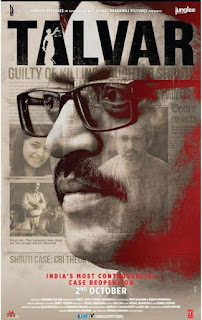It was fun to participate in LitFestX,
an online literature festival where all I was required to do was sit at home and
talk to my computer. Here's the video (the image is fuzzy, and I rambled a little more than I should have - the things I
wrote about Chupke Chupke in the book probably make more sense than what
I say here - but take a look anyway):
(Other video sessions from the fest can be viewed on this page - quite a variety of subjects and speakers.)
Also: another reminder about this year's edition of the Chandigarh Literature Festival (November 5-8), with its many scrumptious sessions that have critics in conversation with authors about specific books (or in conversation with filmmakers about specific films). The updated schedule for the fest is here, so please mark your calendars. Free entry, cosy venue, lots of talented writers and filmmakers: Kiran Nagarkar, Nayantara Sahgal, Gulzar, Jeet Thayil, Ananya Vajpeyi, Tarannum Riyaz, Shivmurti, Arundhathi Subramaniam, Sudeep Sen, Dilip Padgaonkar, Rahul Bhattacharya, Neeraj Ghaywan and Varun Grover, Navdeep Singh, Avinash Arun, Sriram Raghavan... and that's just a short list of participants.
As the dreaded lit-fest season draws near, I am reminded again of how nice it is to have a festival like this, with its many focused sessions where the participants know exactly what they are talking about. That might sound like the sort of thing ANY lit-fest is supposed to ensure, but you'd be surprised. Among many unsavoury experiences in the past, I was once asked to moderate a session where the subject of the discussion was completely unclear, and the organisers told me "It'll be fine - these are experienced writers, each of them will be happy to talk about their work, and all you have to do is prod them." Talk about cattle farms.
And the other day I was told - not asked, just told - that I would be moderating a session for a young author whom I hadn't even heard of, and not to worry, the organisers would send me his book "soon". (This was for a festival that I had already said yes to a few months ago, because they were putting me on a cinema session. May have to reconsider now.)
(Other video sessions from the fest can be viewed on this page - quite a variety of subjects and speakers.)
Also: another reminder about this year's edition of the Chandigarh Literature Festival (November 5-8), with its many scrumptious sessions that have critics in conversation with authors about specific books (or in conversation with filmmakers about specific films). The updated schedule for the fest is here, so please mark your calendars. Free entry, cosy venue, lots of talented writers and filmmakers: Kiran Nagarkar, Nayantara Sahgal, Gulzar, Jeet Thayil, Ananya Vajpeyi, Tarannum Riyaz, Shivmurti, Arundhathi Subramaniam, Sudeep Sen, Dilip Padgaonkar, Rahul Bhattacharya, Neeraj Ghaywan and Varun Grover, Navdeep Singh, Avinash Arun, Sriram Raghavan... and that's just a short list of participants.
As the dreaded lit-fest season draws near, I am reminded again of how nice it is to have a festival like this, with its many focused sessions where the participants know exactly what they are talking about. That might sound like the sort of thing ANY lit-fest is supposed to ensure, but you'd be surprised. Among many unsavoury experiences in the past, I was once asked to moderate a session where the subject of the discussion was completely unclear, and the organisers told me "It'll be fine - these are experienced writers, each of them will be happy to talk about their work, and all you have to do is prod them." Talk about cattle farms.
And the other day I was told - not asked, just told - that I would be moderating a session for a young author whom I hadn't even heard of, and not to worry, the organisers would send me his book "soon". (This was for a festival that I had already said yes to a few months ago, because they were putting me on a cinema session. May have to reconsider now.)











